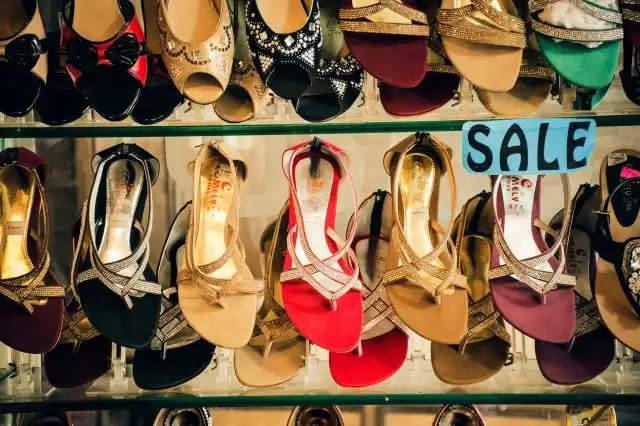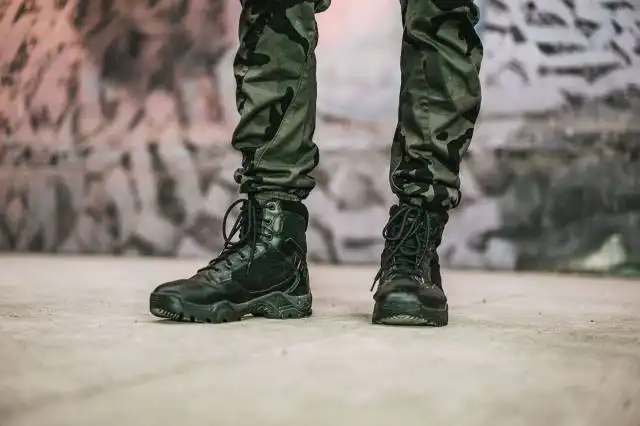Start a Souvenir Shop
Revolutionizing Tourism: Crafting Memories with Your Souvenir Shop
| Updated


SOUVENIR SHOP
Flip the world of memorabilia on its head by starting a Souvenir Shop! This fascinating business idea plunges you into the lively tapestry of culture, crafts, and cherished keepsakes. As a souvenir shop owner, you'd be the gateway for tourists craving to take a piece of their journey home, selling a variety of mementos from postcards and magnets to indigenous crafts or locally made products. Your creativity can soar as wide as the globe, with each purchase telling its own tale and reinforcing a traveler’s unforgettable experience.
Jump to Business Plan
RELATED BUSINESS IDEAS
Browse ALL Retail & Shopping Business Ideas
Discover Your Perfect Domain
Unlock the door to your online success with our hand-picked selection of premium domain names. Whether you're starting a new venture or rebranding an existing one, the right domain can set the tone for your digital presence. Browse through our curated list, each with its unique potential to enhance your brand's visibility and credibility.
SOUVENIR SHOP MINI BUSINESS PLAN
This a quick reality check to help you identify the strengths and weaknesses of your business concept before you dive in.
Business Idea: Souvenir Shop
Expected Percent Margins:
- Gross Margin: 50-60%
- Net Profit Margin: 15-20%
Earnings Expectations:
- Daily Earnings: $150 - $350
- Weekly Earnings: $1,050 - $2,450
- Monthly Earnings: $4,500 - $10,500
- Annual Earnings: $54,000 - $126,000
Actions to Hit Those Numbers:
Inventory Management:
- Initial Investment: Consider investing around $10,000-$20,000 for diverse, quality inventory.
- Supplier Network: Connect with local artisans to stock products that evoke the local culture and are unique to your location.
Marketing and Customer Acquisition:
- Social Media: Capitalize on the reach of platforms popular with tourists like Instagram and Facebook. Post at least twice a week.
- Local Advertising: Participate in local tourism events, partner with local hotels and travel agencies.
Sales and Customer Experience:
- Staffing: Employ 1-2 culturally aware, multilingual staff who can make tourists feel welcomed and valued.
- Display and Decoration: Make your shop a part of the experience. Eye-catching, local-themed decoration can attract more customers. Authentic souvenirs with stories behind them make for great conversation starters.
Cost Control:
- Location: Choose a location frequented by tourists. However, consider the steep rent of such places in your budget.
- Inventory: Regularly track your inventory to avoid overstocking and understocking.
Business Operations:
- Open Hours: Adjust your opening hours according to tourist traffic. Peak tourist seasons may require longer hours.
- Partnerships: Consider partnering with local businesses or tourist services to enhance customer experience and expand your reach.
These are generalized estimations and can vary depending on location, economic conditions, and individual business strategies. Always consult with a financial advisor for personalized advice.
NOT WHAT YOU HAD IN MIND? Here are more ideas



Browse ALL Retail & Shopping Business Ideas
Grab Your Business Website Name
Before you get caught up in the whirlwind of setting up your business, invest in a domain name. It's a small but significant step that lays the foundation for your brand and makes it easier for customers to find and trust you. Just like you wouldn't build a house without securing the land first, don't build a business without securing your domain name.
"Why? Can't that wait?" Here's why it shouldn't
Step 1: Determine if the Business is Right for You
Breakdown of Startup Expenses
Starting a souvenir shop requires a significant investment of both time and money. Before starting the business, it is important to understand the costs associated with setting up a shop. These costs include the cost of the physical space, such as rent, utilities, and insurance; the cost of inventory, such as souvenirs and other merchandise; and the cost of any necessary equipment, such as display cases and cash registers. It is also important to consider the cost of advertising, such as print and digital ads, and the cost of any necessary permits or licenses.
Breakdown of Ongoing Expenses
Once the shop is up and running, there are ongoing costs associated with running the business. These costs include the cost of inventory, such as the cost of purchasing new souvenirs and other merchandise; the cost of utilities, such as electricity and water; the cost of any necessary repairs or maintenance; and the cost of any necessary permits or licenses. It is also important to consider the cost of advertising, such as print and digital ads, and the cost of any necessary staff, such as employees or contractors.
Examples of Ways to Make Money
There are several ways to make money with a souvenir shop. The most obvious way is to sell souvenirs, such as t-shirts, mugs, and keychains. Other ways to make money include offering custom souvenirs, such as personalized mugs or t-shirts; offering custom services, such as engraving or embroidery; and offering special events, such as workshops or classes. Additionally, souvenir shops can also offer gift wrapping services and discounts for bulk purchases.
Step 2: Name the Business
When it comes to naming your souvenir shop, it's important to consider a few key factors. First, you want to make sure your business name is memorable and easy to pronounce. It's also important to make sure the name is unique and not already being used by another business. Additionally, you want to make sure the name is relevant to the type of business you are running. For example, if you are selling souvenirs from a specific country or region, you may want to include that in the name. You may also want to consider the use of alliteration, which is when two or more words in a phrase begin with the same letter. This can help make the name more memorable. Finally, you may want to consider using a play on words or a pun to make the name more interesting.
Step 3: Choose a Location
When choosing a location for a souvenir shop, there are several factors to consider. First, it is important to consider the amount of foot traffic in the area. Souvenir shops thrive in areas that have a lot of tourists, so it is important to choose a location that will attract a lot of people. Additionally, it is important to consider the competition in the area. If there are already a lot of souvenir shops in the area, it may be difficult to make a profit. It is also important to consider the cost of renting or buying a space. Finally, it is important to consider the zoning laws in the area. Some areas may have restrictions on the types of businesses that can be opened in certain areas.
Finding a Location
Once the factors to consider when choosing a location have been identified, it is time to find a location. The best way to find a location is to research the area and look for spaces that meet the criteria. It is also important to look for spaces that are in close proximity to other attractions, such as museums or monuments. Additionally, it is important to look for spaces that are easily accessible and have plenty of parking. Finally, it is important to look for spaces that are within the budget. Once a location has been found, it is important to contact the landlord or owner to discuss the terms of the lease or purchase.
Step 4: Obtain Licenses and Permits
When starting a souvenir shop, it is important to obtain the necessary licenses and permits. Depending on the state and city, the types of licenses and permits needed may vary. Generally, most states require a business license, a sales tax permit, and a zoning permit. Additionally, some states may require a health permit if the shop sells food items. It is important to research the specific licenses and permits needed for the state and city the shop is located in.
How to Obtain Licenses and Permits
In order to obtain the necessary licenses and permits, the business owner should contact the state and local government offices. They will provide information on the specific licenses and permits needed, as well as the cost and application process. Additionally, the business owner should contact a lawyer or accountant to ensure that all the necessary licenses and permits are obtained.
Cost of Licenses and Permits
The cost of licenses and permits will vary depending on the state and city. Generally, the cost of the business license, sales tax permit, and zoning permit will be around $100. Additionally, the cost of the health permit may be around $50. It is important to factor in the cost of the licenses and permits when creating the budget for the souvenir shop.
Timeframe for Obtaining Licenses and Permits
The timeframe for obtaining the necessary licenses and permits will vary depending on the state and city. Generally, it will take around two weeks to obtain the business license, sales tax permit, and zoning permit. Additionally, it may take around one week to obtain the health permit. It is important to factor in the timeframe for obtaining the licenses and permits when creating the timeline for the souvenir shop.
Step 5: Purchase Supplies
The types of supplies needed to start a souvenir shop will depend on the type of souvenirs you plan to sell. You will need to purchase items such as shelves, display cases, and other fixtures to display the souvenirs. You will also need to purchase the souvenirs themselves, such as t-shirts, mugs, magnets, and other items. Additionally, you will need to purchase other supplies such as bags, tissue paper, and boxes to package the items.
Where to Purchase Supplies
When it comes to purchasing supplies for your souvenir shop, you have a few options. You can purchase supplies from local stores, online retailers, or wholesalers. Local stores may offer a wide variety of supplies, but they may be more expensive than online retailers or wholesalers. Online retailers may offer a wider selection of supplies, but you may have to pay for shipping. Wholesalers may offer the best prices, but you may have to purchase a minimum amount of supplies.
Cost of Supplies
The cost of supplies for your souvenir shop will vary depending on the type and quantity of supplies you purchase. For example, shelves and display cases may cost anywhere from a few hundred dollars to several thousand dollars. The cost of souvenirs will also vary depending on the type and quantity of items you purchase. Additionally, you may have to pay for shipping if you purchase supplies online.
Tips for Purchasing Supplies
When purchasing supplies for your souvenir shop, it is important to shop around to find the best prices. You should also compare the quality of the supplies to ensure that you are getting the best value for your money. Additionally, you should purchase supplies in bulk to get the best prices. Finally, you should look for coupons and discounts to save even more money.
Step 6: Market the Business
When it comes to marketing the business, there are a variety of ways to do so. One of the most important ways to market the business is to create a website. This website should include information about the business, such as what types of souvenirs are available, the store’s hours, and contact information. Additionally, the website should include photos of the store and the souvenirs that are available. Additionally, it is important to create an online presence through social media. This can be done by creating a Facebook page, Twitter account, and Instagram account. These accounts can be used to post photos of the store and the souvenirs, as well as to promote special offers and discounts. Additionally, it is important to create a mailing list so that customers can be notified of special offers and discounts. Finally, it is important to create relationships with other local businesses, such as hotels and tourist attractions, so that they can refer customers to the souvenir shop.
Tips for Advertising
When it comes to advertising the business, it is important to create an effective and eye-catching advertisement. This can be done by creating a catchy slogan and a visually appealing logo. Additionally, it is important to create a budget for advertising and to stick to it. This budget should include money for print, radio, and television advertisements, as well as money for online advertisements. Additionally, it is important to create a plan for how and when to advertise. This plan should include when and where to advertise, as well as how much to spend on each advertisement. Finally, it is important to track the results of each advertisement so that the business can determine which advertisements are the most effective.
Step 7: Set Up Accounting
Setting up accounting is an important step in starting a souvenir shop. It is important to keep track of all financial transactions and ensure that the business is profitable. It is also important to ensure that taxes are paid on time and that all financial records are kept up to date.
When setting up accounting, it is important to choose the right software. There are many different software packages available, so it is important to research and find the one that best fits the needs of the business. It is also important to make sure that the software is user-friendly and easy to use.
Another important part of setting up accounting is to create a budget. This will help the business owner to track their expenses and income and make sure that the business is profitable. It is also important to create a system for tracking inventory and sales. This will help the business owner to know what items are selling and what items need to be reordered.
Finally, it is important to create a system for tracking customer information. This will help the business owner to keep track of customer orders and contact information. This will also help the business owner to create a customer loyalty program and reward customers for their loyalty.
Step 8: Hire Employees
When it comes to hiring employees, it is important to hire people who are passionate about the business and who have the necessary skills to help the business succeed. It is also important to consider the cost of hiring employees, as this can be a significant expense. When looking for employees, consider using job boards, social media, and other online resources to find qualified candidates. Additionally, consider offering incentives such as bonuses or vacation days to attract and retain the best employees.
Training Employees
Once the right employees have been found, it is important to provide them with the necessary training. This should include training on the products and services offered, customer service, and any other skills needed to successfully run the business. Additionally, it is important to provide employees with the necessary tools and resources to do their job. This can include computers, software, and other materials.
Establishing Policies and Procedures
It is important to establish policies and procedures for the business. This should include rules for employee conduct, safety protocols, and any other policies that will help keep the business running smoothly. Additionally, it is important to provide employees with a handbook that outlines the policies and procedures of the business. This will help ensure that everyone is on the same page and that all employees understand the expectations of the business.
Setting Employee Goals
Finally, it is important to set goals for employees. This can include sales goals, customer service goals, and any other goals that will help the business succeed. Setting goals will help keep employees motivated and will help ensure that the business is meeting its goals. Additionally, it is important to provide employees with feedback on their performance and to recognize their successes. This will help keep employees engaged and motivated to do their best.
Step 9: Open the Business
Opening a souvenir shop requires a lot of preparation and planning. Before officially opening the business, it is important to make sure that all the necessary permits and licenses have been obtained. Additionally, it is important to have a good understanding of the local market and competition, as well as a clear plan for marketing the business. It is also important to have a solid understanding of the financials of the business, including the projected income, expenses, and profits. Finally, it is important to have a plan for managing the business, including hiring employees, managing inventory, and setting up a point of sale system.
Tips on Promoting the Business
Once the business is open, it is important to promote it to the local community. This can be done through a variety of methods, including traditional advertising, such as radio and print ads, as well as digital marketing, such as social media and email campaigns. Additionally, it is important to create a website for the business, and to use SEO techniques to ensure that the website is visible in search engine results. It is also important to create a strong presence on social media, and to use influencers to help spread the word about the business. Finally, it is important to create relationships with local businesses and organizations, as well as to participate in local events to help spread the word about the business.
EXPLORE MORE CATEGORIES
Browse ALL Business Idea Categories
TAKE THE NEXT STEPS










